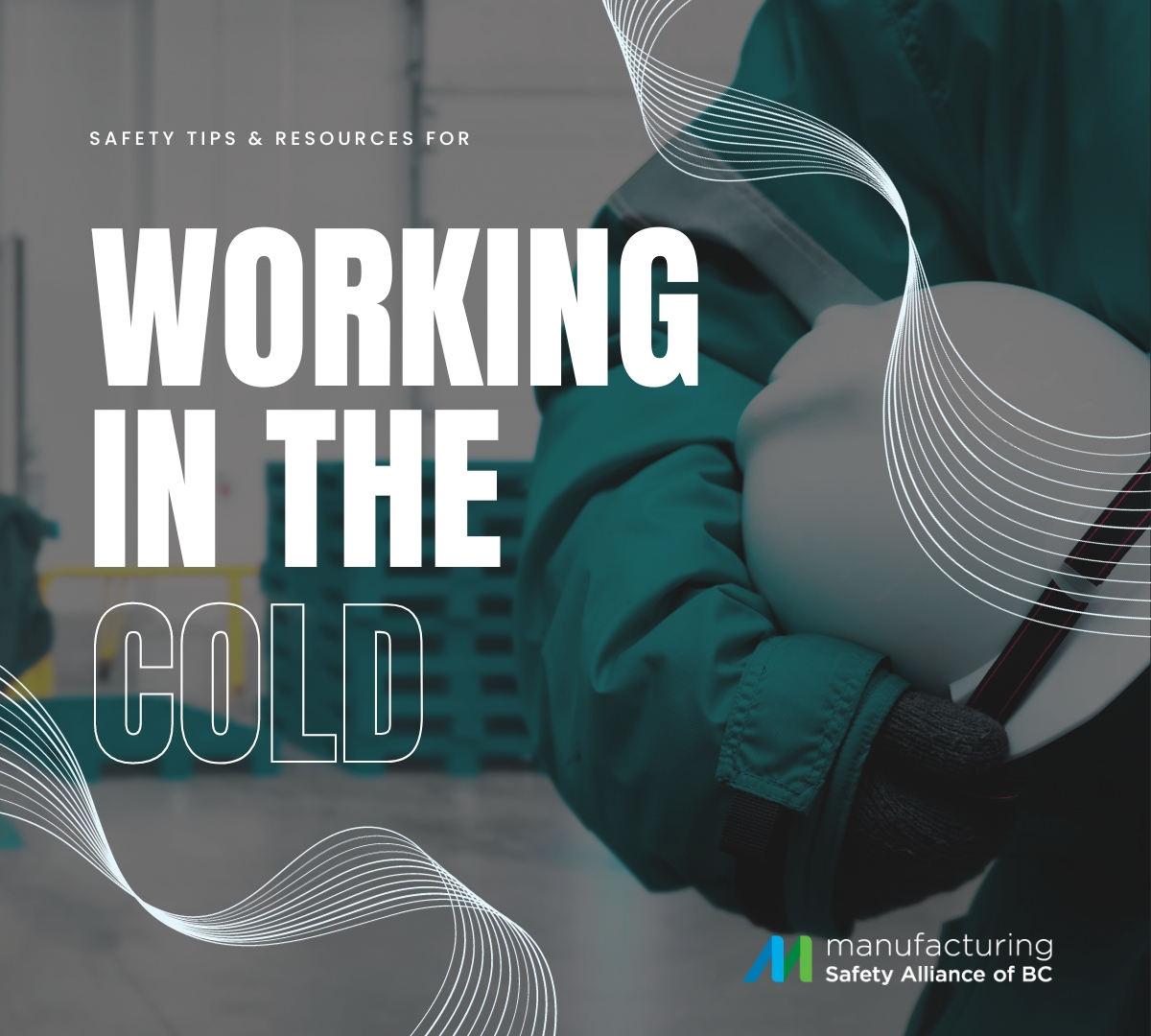Are your employees working in the cold? Understand and address the risks to avoid injury.
Jennifer Wiebe2024-01-11T08:55:31-08:00With cold temperatures and winter conditions on the horizon, employers have an obligation to keep workers safe from winter-weather hazards. As the temperatures drop, workers in unheated (or refrigerated) areas of your facility – or whose work takes them outside, are at higher risk of injury from a range of potential hazards.
As employers, you are responsible for assessing the changing risk profile of your employees’ work environment implementing comprehensive safety measures to minimize the risks.
Here are some resources that can help—and your Manufacturing Safety Alliance of BC safety advisor can assist. Contact us for help here.
Risk areas to consider:
Winter driving hazards
Limited visibility and icy conditions result in substantially more motor vehicle accidents during the winter months. The winter months are high season for work-related motor vehicle accidents. If your employees are on the road, do they need to be? Do they have the appropriate tires, training, and knowledge to drive safely in adverse winter conditions?
Webinar: The business and social case for managing driving risks
Slips and Falls
Icy surfaces increase the risk of slips, trips, and falls—which can sideline workers with sprained ankles or wrists or broken bones. What steps have you taken to assess and minimize these risks?
Equipment malfunction
In cold environments, lubricants can freeze, plastic tools may become brittle, and electronics may malfunction. Is your equipment rated for the lower temperatures?
Cold stress
A range of cold-related illnesses present a risk to employees in cold and wet environments as we often experience in a B.C. cold snap. Exposed fingers, toes, ears, and noses can be vulnerable to frostbite—and hypothermia can be life-threatening. In the past ten years, WorkSafeBC has accepted 167 claims for disability benefits for injuries related to cold stress. Do your employees have the right clothing to work in cold temperatures? Are they taking adequate breaks to warm up?
What health concerns and exposure limits should you be aware of for workers in cold environments? Find out:
- Call an Alliance safety advisor, occupational hygienist, or ergonomist for advice.
- Check out this key fact sheet on risks factors and controls for employees working in the cold.
- Review the hazard matrix in Environment Canada’s Wind Chill Index page to assess your risk and determine appropriate controls.
- Driving is the most significant risk for many companies. Visit Shift Into Winter for help.



